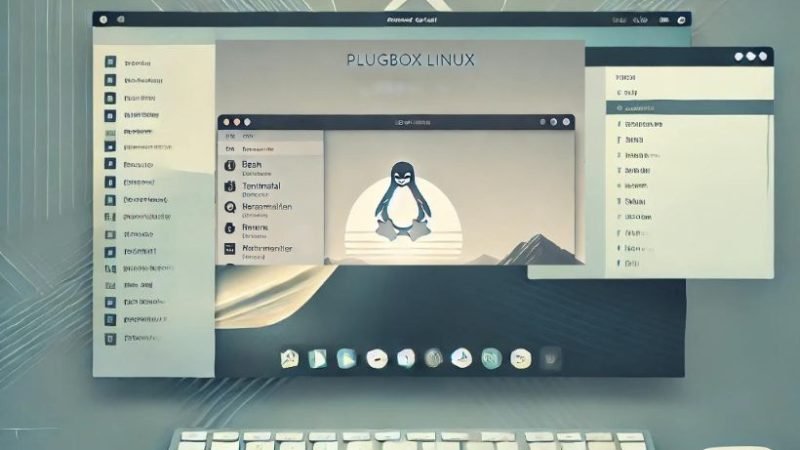Maximise Your Study Sessions: Converting PDFs To Editable Documents

As technology continues to transform, so does the approach of learning and studies. Now, many of us leverage technology over cumbersome binders and stacks of notebooks while studying. Amidst this paradigm, one of the powerful techniques that has made study sessions quite productive is the conversion of PDFs to editable documents.
This great technology has led many of the students to maximise their time for studies and opened up new opportunities, like editing, customising, collaborating and annotating documents, which was not possible earlier. If you are a student as well, then this article is for you. Here, we will be discussing some of the best techniques and advantages that you can leverage to elevate your study experience and take it to the sky by converting PDF to editable PDF documents.
Table of Contents
Understanding The Challenge
In today’s hyper-growth academic environment, many of you might feel intimidated by a lot of information available in PDF documents. While PDFs offer a level of convenience when it comes to sharing information across different devices, they pose challenges also. One of the primary challenges which many of you might have faced is the less interactive environment and low adaptability.
As compared to other editable document formats like docx or ppt, it is not possible to make any annotations or changes to pdf files. Thus, it might not suit everyone’s learning needs. For example, while studying in group studies, collaboration and discussions are necessary, which are lacking with PDF. Additionally, this rigidity might hinder productivity, comprehension and retention during study sessions. Hence, it is quite necessary to convert PDF to an editable PDF file.
Advantages of converting PDFs to editable documents
By converting online PDF to PDF editor format, you can revolutionise your study experience by leveraging certain advantages. By harnessing the power of online PDF editor tools, as a student, you can convert your static PDFs to lively documents that enhance collaboration, interactivity and flexibility. Here are some of the key advantages:
-
Enhanced Interactive
Editable PDF files allow you to easily highlight key information, annotate text and highlight certain information in the document. This feature allows an active engagement with content, enabling students to mark important concepts and jot down necessary points.
Further, you can also use some multimedia elements like audio recordings, videos and images to enrich the understanding of difficult lesions.
-
Flexibility Note-taking
Using online PDF to PDF editor format, you can customise the appearance and layout of documents based on your respective preferences. From selecting font styles to colours, you have full control to enhance the aesthetic presentation of the document.
Additionally, you can also integrate your editable documents with some note-taking applications and software. Whether you are using Notion, OneNote or EverNote, you can easily sync your editable documents across different devices and organise them in structured notebooks.
-
Collaborative Study Opportunities
With editable documents, you can easily collaborate with your batch mates and work together on different projects. By using features like simultaneous editing and commenting, you can share insights, learn collaboratively and provide feedback to each other.
Moreover, with editable formats, you can foster a culture of knowledge sharing and constructive criticism. Overall, you can exchange ideas, refine your study material with accuracy and comprehensiveness and exchange ideas with peers.
Tools and Techniques for Conversion
Manual Conversion Technique
The manual conversion technique involves copying content from PDF and pasting it to any editable format like Google document or Microsoft Word document. Many students find this quite a simple method when they don’t want to copy complete documents but only bits of them.
If you want to use the same technique, then here is the step-by-step guide for you.
Step 1: Open the PDF document in a PDF editor software like Adobe Acrobat.
Step 2: Go to the pages where you want to select the content, like text or images. One of the easy techniques is to drag your mouse pointer over the content, and for images, it is ideal to take screenshots or copy them.
Step 3: After you have copied the data, start pasting it to document tools like MS Word or Google Docs. The shortcut keys are Ctrl + V for Windows and Command + V for Mac.
Step 4: After completing the process, review all the content and align them based on your requirements.
Step 5: Save the document at the specified location of your computer or on the cloud. You can repeat the same process for multiple pages or PDF documents.
Use of Inbuilt Features of PDF Editor like Adobe Acrobat
Using this technique, you can easily streamline the process by employing a PDF converter to convert PDF to any editable format such as Microsoft Word, Excel, or PowerPoint. Softwares like Adobe Acrobat offer a wide range of user-friendly features to ensure accurate conversion without impacting format or layout.
To convert the document to editable format, you can follow the steps given below:
Step 1: Launch Adobe Acrobat Reader, and by going to the File menu, open the document you want to convert.
Step 2: Identify the document type
- If your document contains scanned pages or image-based content:
- Go to the Tools section and choose “Enhance Scans”.
- Click on “Recognise text”, which will use OCR (Optical Character Recognition Process).
- If your document is a standard one with text-based content:
- Follow the steps given below directly.
Step 3: Choose the “Export” option from the File menu and select the desired format, such as Microsoft Word, Excel, or PowerPoint.
Step 4: Select the output option; for image-based documents or scanned pages, it is recommended to choose Word Docx. Whereas for text-based documents you can choose any preferred format.
Step 5: Fine-tune settings. Based on your document, you can adjust some settings, like the following:
OCR settings: Specify language along with other ORC preferences like output format.
Layout Options: maintain formatting or optimise the document for standard output.
Step 6: Start to export the document by clicking on the “Export Button”. Adobe Acrobat will convert documents and process them to editable format.
Step 7: Review and edit if needed.
It is good to review documents and make necessary corrections or edits using Adobe Acrobat’s editing tool.
Step 8: Save the document once the conversion is completed at the desired location of your computer.
Tips and Tricks to Maximise Your Study Sessions
To make the most out of your study sessions with editable PDF documents, follow these tips:
File Organization
- Utilise features like headings and subheadings to break down your lesson into different sections. This will make it quite easier for you to navigate through different topics easily in the editable file.
- You can also use bullet points to outline the key concepts or highlight them using the highlighter option in Word editing tools.
Interactive Study Sessions
You can add some interactive elements like hyperlinks or views to make study material more interactive.
Also, there are some tools through which you can integrate some quizzes or questions to implement reinforced learning. This would make your study material more engaging and, hence, increase the retention rate.
Active Learning tools
- You can incorporate images or some flashcards to explain the complex topic easily and market them for future review.
- There are options like annotations which you can use to add some important information at specific parts of your documents to foster active learning and deepen the overall learning process.
Accessibility Solutions
- Many mobile applications are available to edit documents on the go while studying. Numerous applications allow you to perform some tasks like highlighting, annotating and organising study material directly from your smartphones.
- You can easily store your editable documents on cloud-based platforms like Dropbox and Google Drive to easily access them from anywhere with just an internet connection.
Spaced Repetition
- As a student, you can use the repetition technique, where you can revisit the previously studied material in a certain period to foster long-term retention and reinforce learning.
- This allows you to update your study material with the latest insights or trends. Expanding the existing content will keep you updated with new trends and topics emerging daily.
Establish a Study Routine
- Dedicating a certain time slot for your study and using editable documents would help you to be consistent in continuous learning.
- Using different cloud-based platforms and synchronisation features, you can access your study material from anywhere. This will allow you to study anytime, anywhere, without any kind of hindrance.
Conclusion
In a nutshell, if you are looking to improve your studies using technology, then editing PDF to editable PDF formats would help you a lot. Using the right tool and technique would allow you to easily convert your online PDF to PDF editor format in no time and design it as per your requirements.
This will help you to significantly enhance your learning outcomes. The use of different components like interactive study guides, spaced repetition techniques and active learning tools would empower you with long-term recall and retention. Leverage these tips and tricks to maximise the outcome of your learning sessions and achieve all your education goals.
Also Read : PDF Tips And Tricks For Work Optimization




